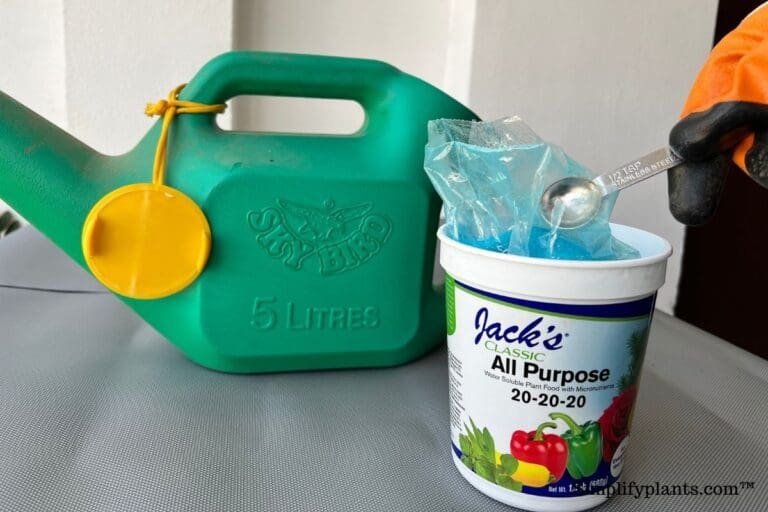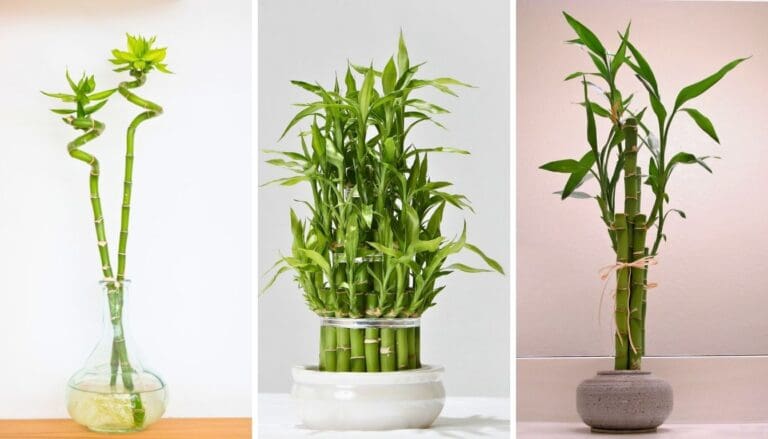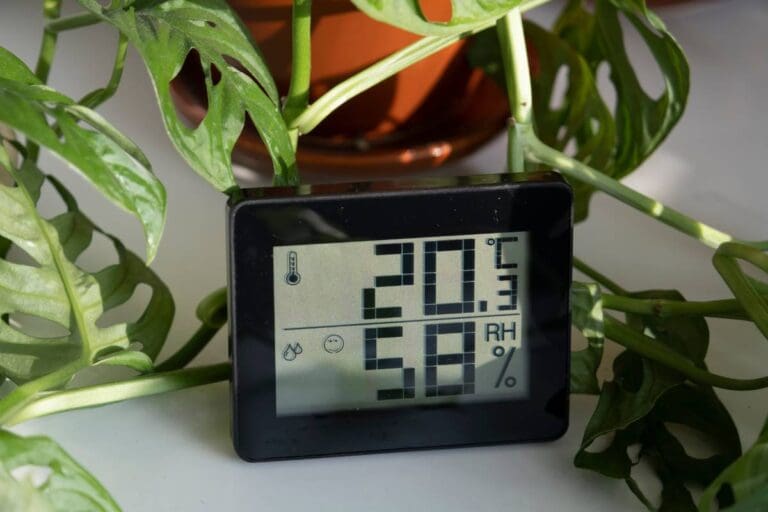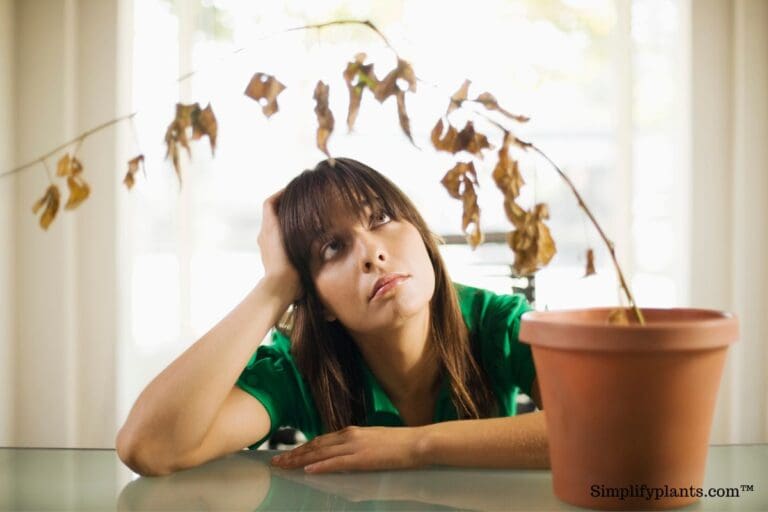10 Genius Tricks to Keep Plants Alive in Summer Heat
When summer rolls in, I can’t help but notice my plants start to struggle with the heat and blazing sun. It’s honestly a challenge to keep them healthy once those temperatures spike.
I’ve picked up a few simple tricks that actually make a difference, even during the hottest months. With just a handful of smart tweaks, my garden stays green and pretty happy all season.
Please note: Simplify Plants is reader-supported. As an Amazon Associate, I earn from qualifying purchases made by our readers with no extra cost added to you all! Some links in the post are affiliate links and I get a commission from purchases made through links in the post.
1) Water early in the morning to reduce evaporation

I always try to water my plants first thing in the morning. That way, the water gets a chance to really soak in before the sun gets too fierce.
If I wait until later in the day, the heat makes most of the water vanish almost instantly. Morning watering just keeps my plants hydrated longer, and honestly, they look a lot fresher.
Watering in the evening? Sometimes that leaves water sitting on the leaves overnight, which can cause mold or plant diseases. Sticking to mornings gives everything time to dry out during the day.
It’s even more important when there’s a heat wave. Cooler mornings mean more water actually reaches the roots, and I’m not wasting as much.
I use a watering can or a gentle hose, just to avoid splashing dirt up onto the leaves. A steady, slow soak is really all it takes.
Setting a reminder on my phone helps me keep up with it. Give it a try—your plants will probably thank you!
2) Use shade cloths to protect delicate plants
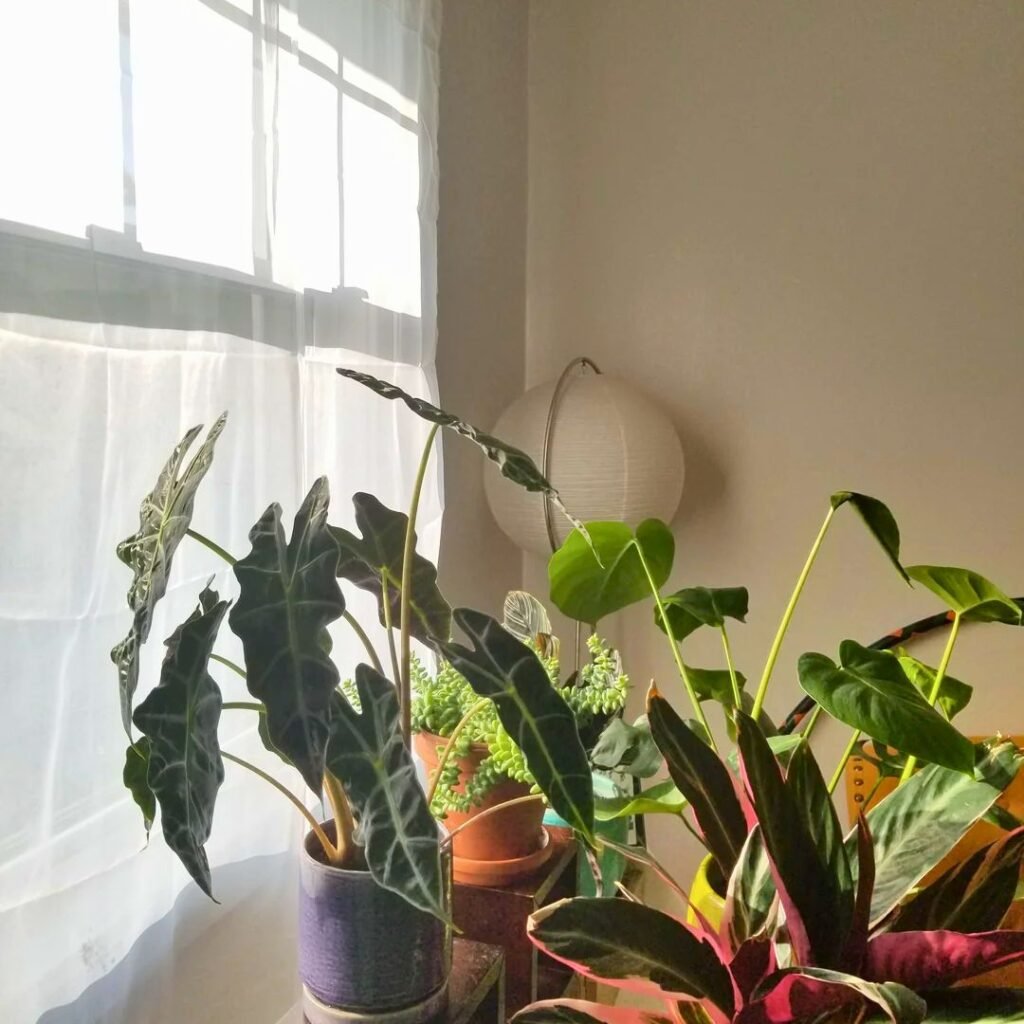
When the sun gets brutal, I grab some shade cloths/Sheer curtains to shield my plants. Shade cloths are great for blocking out just enough sunlight so leaves don’t get scorched.
I usually go for a 30-50% shade cloth—it’s enough for most flowers and veggies. It keeps them growing but protects them from the harshest rays.
I attach the cloth above my plants with stakes or hoops, making sure it’s not resting right on the leaves. Airflow’s important, after all.
Shade cloths are a lifesaver during the worst heat. If I notice drooping or yellowing, I know it’s time to put them up.
I prefer light-colored cloths since they reflect heat better. Dark ones just seem to trap warmth, which isn’t what I want.
I check daily to see if my plants need more or less shade, and I adjust things as I go. Having shade cloths around just makes summer gardening less stressful.
3) Mulch with straw to keep soil cool
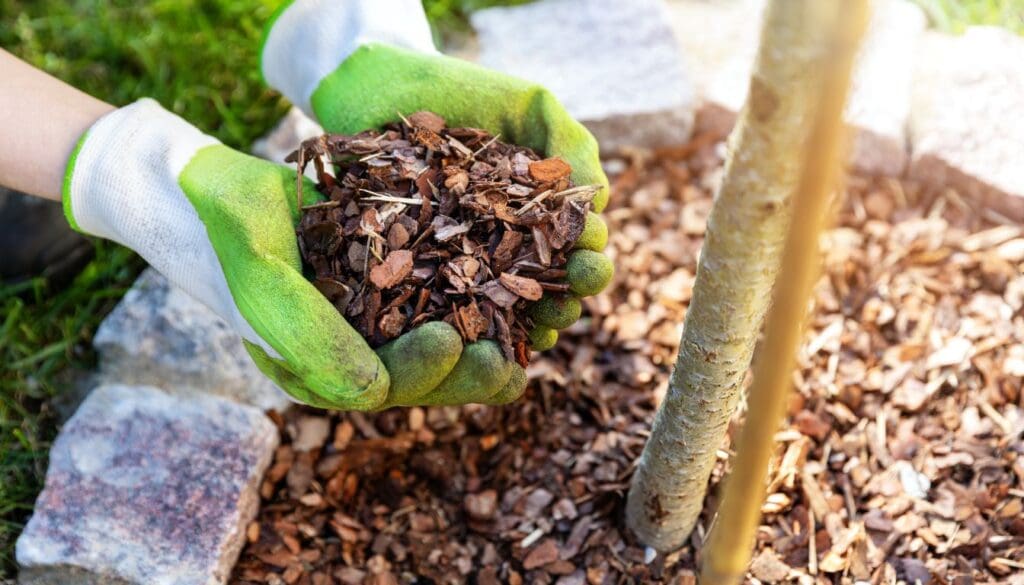
Straw mulch is my go-to in summer. It keeps the sun from baking the soil, and my plants just seem happier.
Straw acts like a comfy blanket. It keeps the soil cool and holds in moisture, so I don’t have to water as much.
I leave a little gap around the stems so air can move and mold stays away. A couple inches of straw lasts for weeks.
Straw’s easy to find and not expensive. It breaks down slowly, turning into compost over time.
I also see fewer weeds where I use straw, so my plants don’t have to compete as much. That’s a win in my book.
It doesn’t clump or get soggy like some other mulches. I like that it lets air and water through just enough.
If it’s windy, I’ll water the straw right after spreading it out to keep it from blowing away. Topping it up now and then keeps everything working smoothly.
4) Apply seaweed extract as a natural stress reliever

Honestly, summer heat stresses me out—and my plants too. Seaweed extract is my go-to for helping them bounce back.
I mix seaweed extract with water and pour it at the base, or sometimes spray it right on the leaves for a quick pick-me-up. It’s packed with nutrients and plant hormones, which seem to help roots get stronger.
I use it on potted plants and houseplants, not just in the garden. It’s gentle, so I don’t worry about damaging anything.
It’s easy to find and lasts a long time since you only need a little. If I see my plants wilting, seaweed extract is the first thing I reach for.
This simple step gives me some peace of mind when the weather gets wild.
5) Place reflective mulch to deflect sunlight
I use reflective mulch when the sun feels relentless. Silver plastic or aluminum foil works—anything shiny to bounce that sunlight away.
By reflecting the rays, the soil underneath stays cooler. This helps protect plant roots and slows water evaporation.
I cut the mulch to fit and lay it around my plants, leaving space for water to seep in. No fancy tools needed.
Reflective mulch also keeps some weeds at bay, so my plants don’t have to fight for resources.
I’ve noticed less wilting on the hottest days with this trick. Shiny mulch really does make a difference.
If I run out, I’ll use aluminum foil and just anchor it so it doesn’t blow away. Not glamorous, but hey, it works.
6) Prune excess foliage to reduce water loss
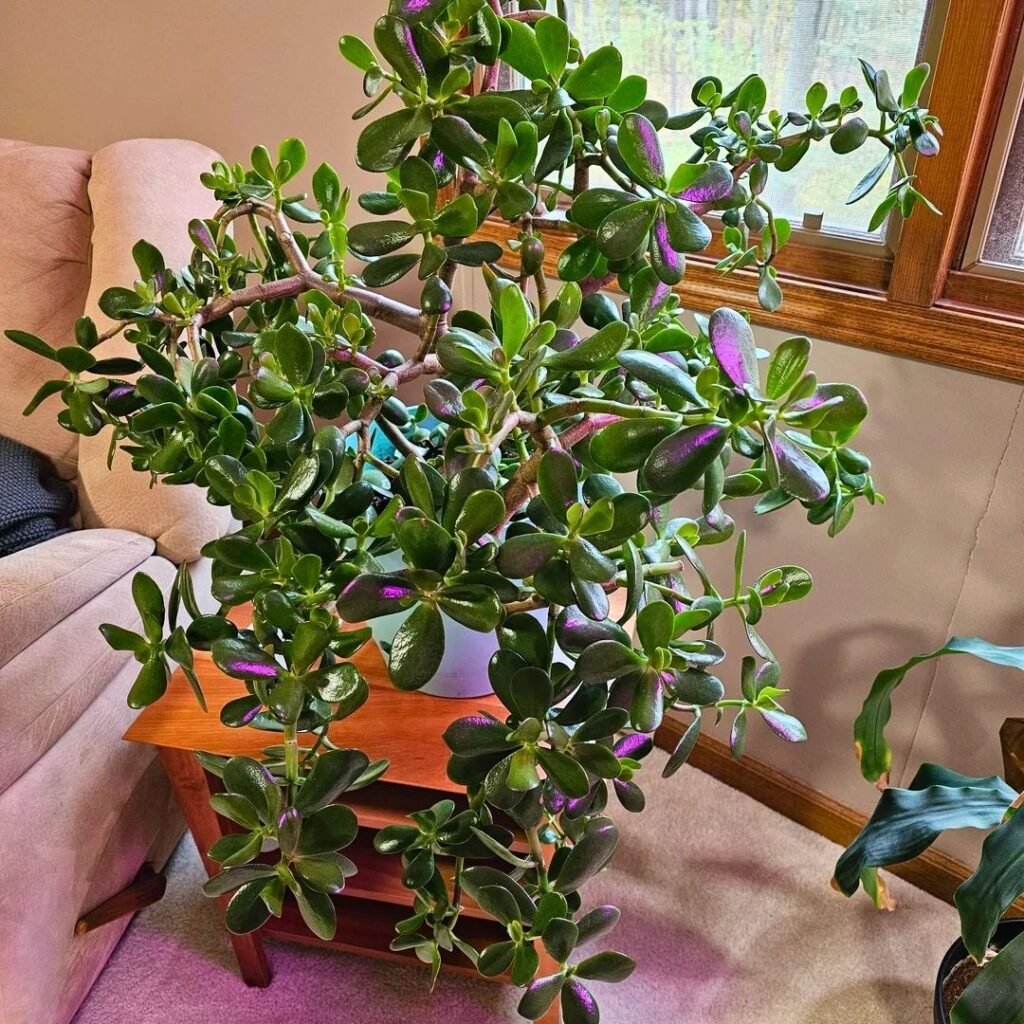
If my plants start getting bushy, I trim off some of the extra leaves. Too many leaves mean the plant loses water faster, especially in the heat.
I snip off damaged or old leaves first, since they’re just using up water and not helping much. That way, the plant can focus on the healthy parts.
Sometimes, if a plant is really struggling, I’ll cut back a few healthy leaves too. But I never trim more than a third at once—too much can shock the plant.
I always use clean scissors or shears, just to avoid spreading any diseases. It’s a quick job, but it helps more than you’d think.
After pruning, my plants look less crowded and perkier. With fewer leaves, they don’t dry out as fast, which is a relief during those scorcher days.
7) Grow heat-tolerant varieties like succulents

When it’s blazing outside, I stick with heat-tolerant plants. Succulents are perfect—they store water in their leaves and don’t need constant attention.
Succulents come in all shapes and colors, so they’re fun to grow and actually look good. I plant them in spots where other things would just wilt.
Other tough plants like cacti or sedum are also great for hot, dry weather. They barely get stressed, even when it’s dry for days.
Growing these hardy plants saves me a lot of worry. If I’m away or forget to water, they’re still fine.
Mixing heat-tolerant plants with my regular ones keeps the garden looking green, even in the worst heat. It’s honestly a relief.
8) Mist leaves to increase humidity
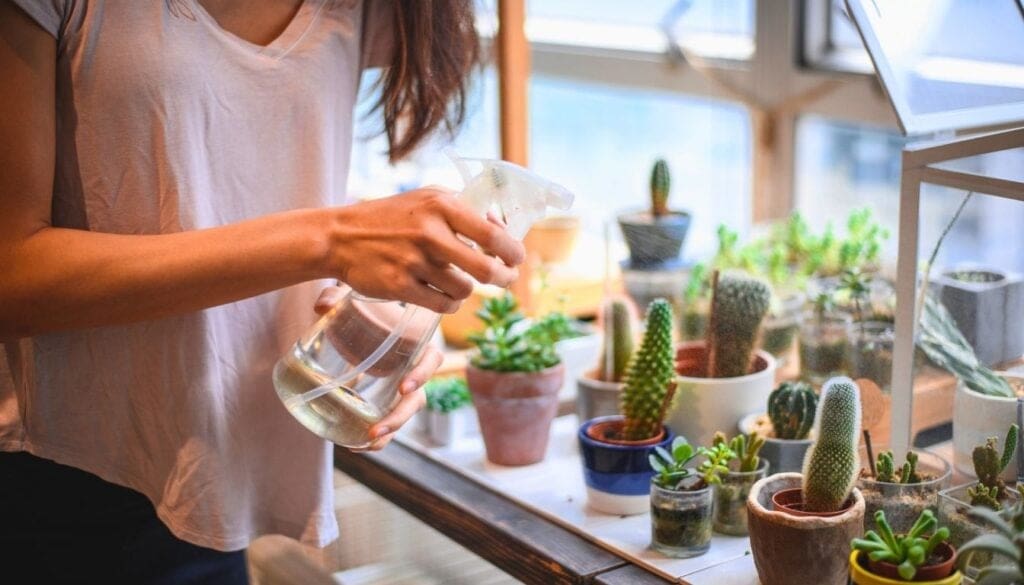
I like to mist my plant leaves on extra hot days. Just a quick spray with a bottle does the trick.
Misting helps increase humidity for a bit, which most tropical plants really appreciate. Dry air can be rough on them.
I always mist in the morning or early afternoon, so leaves have time to dry before night. Wet leaves overnight are just asking for trouble.
I avoid misting in direct sunlight—water droplets can burn the leaves, which is the last thing I want.
Once a day or a few times a week is usually enough, depending on how dry it feels. Not every plant likes misting though—succulents, for example, would rather skip it.
I use room-temperature water so I don’t shock the leaves. And I make sure it’s clean, so there’s no weird residue.
Misting keeps my plants happier and gives me a chance to check for any issues like browning or pests.
If I notice water pooling, I’ll gently wipe it off. Standing water just leads to rot, so I try to avoid that.
Honestly, it’s a simple habit, but it helps my plants get through those hot, dry days.
9) Plant in raised beds for better drainage
Honestly, raised beds make a big difference for my plants during hot summers. When I use them, the soil doesn’t get soggy after rain or a good watering.
Water drains away faster in raised beds, so my plants’ roots don’t sit in wet soil for long. That means less root rot to worry about.
I don’t stress as much about overwatering, since the raised beds help balance moisture. It’s just one less thing to fuss over.
Another thing I’ve noticed is the soil warms up faster in raised beds. Plants seem to wake up earlier in the season.
Weeds are a bit easier to control, too. That means my plants get more of what they need.
I can control the kind of soil I use in my raised beds, which is honestly a lifesaver. I like mixing in compost and other stuff to make sure the soil drains well but still holds just enough moisture.
Raised beds are awesome if your yard soil is hard or full of clay. I don’t have to dig deep holes or wrestle with tough dirt.
My plants’ roots can really spread out in the soft, loose soil I add to the beds. That’s a win for them and for me.
Building a raised bed doesn’t need fancy tools. Wood, bricks, old cinder blocks—I’ve tried them all.
I keep my beds at a height that’s easy to reach, which saves my back. Honestly, it just makes gardening more enjoyable.
When the summer heat kicks in, I notice raised beds help prevent water from pooling. My plants seem to get just the right amount.
This simple trick really makes a difference for me every year.
10) Use self-watering containers

I’ve got to say, self-watering containers are a game changer for my plants in summer. They make watering less of a chore and help keep the soil from drying out too fast.
Self-watering containers have a built-in reservoir at the bottom. This little feature holds extra water, and the plant roots can grab it when they need to.
With these containers, I don’t have to worry about forgetting to water every single day. The plant gets water slowly and evenly, which just helps it stay healthier.
This is really helpful when the weather is blazing hot or when I’m busy or out of town.
I find my plants are less likely to wilt or get stressed from dry soil with these containers. They work great for both indoor and outdoor plants.
I use them for veggies, herbs, flowers—pretty much everything. To get started, I fill the reservoir with water and add soil on top.
I make sure there’s a way for the roots to reach the water below. Some containers have wicks that pull water up to the soil, which is pretty clever.
If I’m going on a trip or if the summer is extra hot, self-watering containers give me peace of mind. My plants stay moist for several days, even if I’m not around.
I also like that these containers come in all sorts of sizes and styles. There’s always one that fits my space or matches my vibe.
They’re easy to use, and I can check the water level through a little window on the side. Super handy.
Understanding Summer Plant Stress
Hot weather makes plant care a whole different ball game. I just want to keep my plants happy, so knowing how summer heat messes with them—and what to watch for—helps a lot.
How High Temperatures Affect Plant Health
When temps climb, plants lose water way faster through their leaves. That’s transpiration.
If I don’t water enough, they get dehydrated before I know it. Heat can also slow down growth.
Some plants may stop flowering or producing fruit during a heatwave. Roots can get damaged if the soil gets too hot, especially in pots.
Key Effects of High Heat:
- Wilting
- Browning leaf edges
- Flower drop
- Slower growth
If my plants are in dark pots or near concrete, they can overheat even more. I have to be extra careful with sun exposure—plants can get sunburned, just like we do.
Signs Your Plant Needs Help
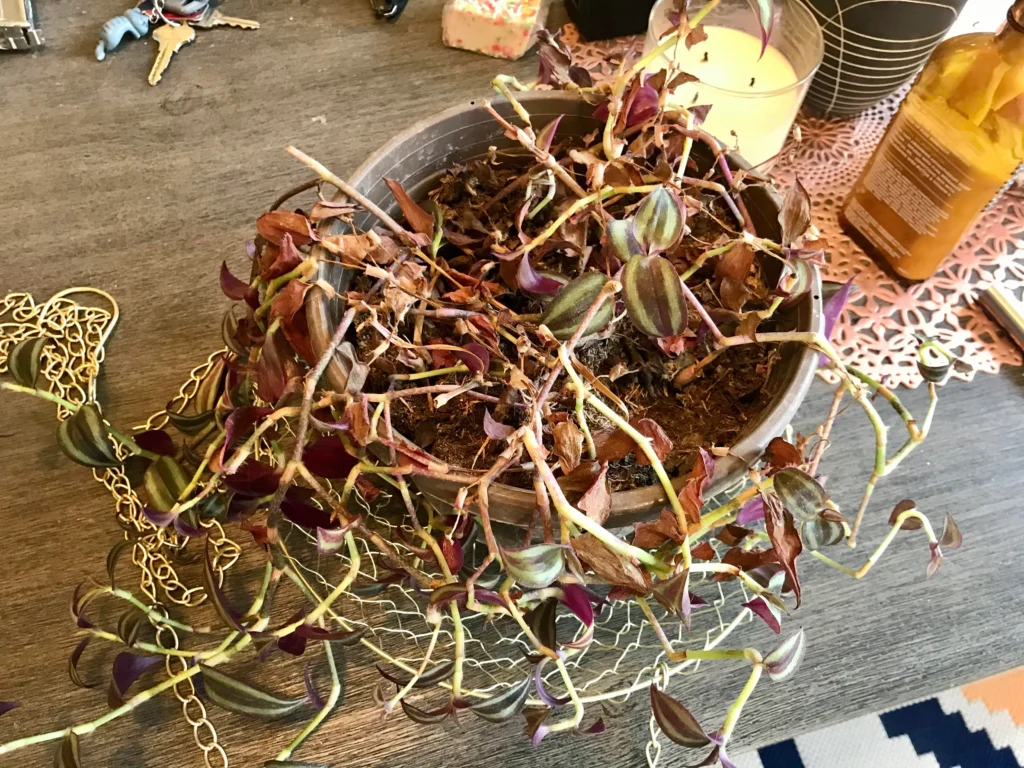
Plants usually show pretty clear signs when they’re stressed from heat. Wilting is the first thing I spot.
If leaves droop during the day but perk up in the evening, the plant probably just needs a drink.
Other common signs:
| Symptom | What It Means |
|---|---|
| Yellowing leaves | Too much sun or water |
| Brown tips/edges | Heat or dryness |
| Leaf drop | Sudden stress |
I check soil moisture by poking my finger in it. If it’s dry an inch down, my plant is thirsty.
I watch for flowers falling off early or new leaves turning pale—those are hints my plants need a little extra care in the heat.
Best Practices for Plant Care in Extreme Heat
Summer can be rough on plants. If I don’t protect them from too much sun and water them at the right times, they wilt fast.
A few simple steps make a huge difference on hot, sunny days.
Choosing the Right Time to Water
Watering at the right time lets my plants absorb more and avoids damage.
I always water early in the morning, before 9 AM, or after the sun goes down in the evening.
This helps the soil stay cool and keeps plants from losing water to the heat. If I water in the afternoon, most of it just evaporates, and the hot sun can even burn wet leaves.
I check the soil first—if the top inch is dry, it’s time to water. I use a hose with a gentle spray or a watering can, just to avoid washing away soil.
Deep watering is way better than a light sprinkle. I try to get water down at least 6 inches.
That way, roots grow deep and strong, which helps them handle hot weather better.
Creating Shade Solutions for Plants
When the sun’s crazy strong, providing shade is a must for keeping plants from getting scorched.
I use old sheets or burlap for quick shade covers over garden beds. For potted plants, I just move them somewhere with morning sun or tuck them under a tree.
If there’s no natural shade, I stick up some stakes and stretch shade cloth over them. I make sure the cloth sits a few inches above the plants so air can flow and heat doesn’t build up.
For small gardens, I’ve even used umbrellas or flipped laundry baskets during the hottest hours. I check on the shade every day to make sure plants still get some light but are protected when the sun is harshest.
Keeping my plants shaded during heat waves really stops leaves from burning and helps them bounce back.
Frequently Asked Questions
I get how tough it can be to keep plants alive and happy in summer. I use smart watering, shade, and mulch to help my plants survive the heat.
How often should I water my plants during hot summer days?
I check the soil every day. If the top inch feels dry, I water early in the morning.
Most plants need water at least every 1-2 days during a heatwave. Water deeply so the roots grow strong.
What are some effective ways to provide shade for my outdoor plants?
I use shade cloth or a patio umbrella to block the harsh sun. Sometimes, I just place taller plants in front of delicate ones.
Shade cloths are light and easy to move. Old bed sheets work in a pinch, too.
Can I use mulch to help my plants retain moisture, and if so, which type is best?
I always add a layer of mulch to keep soil cool and moist. Straw works great because it helps trap water and lets the soil breathe.
Wood chips and bark are good, but honestly, straw is just easier to spread.
Are there any particular signs of heat stress I should look out for in my plants?
Wilting leaves, brown edges, or leaves that feel dry are big warnings. Sometimes I see flowers or fruits dropping early.
If I spot limp leaves in the afternoon, it’s usually a sign my plants need help.
What time of the day is ideal for watering plants in the summer to prevent evaporation?
I water all my plants early in the morning. This gives them time to drink before the sun gets too hot.
Watering in the evening can lead to fungus, so I try to avoid it.
How can I protect my potted plants from overheating on my patio or balcony?
I try to keep my pots in partial shade, especially when the afternoon sun gets intense. If possible, I’ll move them out of direct sunlight for a while.
Grouping pots together helps too—they sort of shield each other. Sometimes I set the pots on trays filled with water, hoping it’ll cool the roots a bit.
Recommended Garden Supplies
| Product Image | Our Recommended Gardening Supplies | Check Offers! |
|---|---|---|
Top Top
Top
Top
Top
Top
Top
Top
Top | rePotme Houseplant and Tropical Classic Potting Soil Mix | Check Offer On Amazon |
 Top
Top
Top
Top
Top
Top
Top
Top | Espoma Organic Indoor Plant Food | Check Offer On Amazon |
 Top
Top
Top
Top
Top
Top
Top
Top | GooingTop LED Grow Light 6000K Full Spectrum Clip Plant Growing Lamp | Check Offer On Amazon |
 Top
Top
Top
Top
Top
Top
Top
Top | Soil Moisture Meter | Check Offer On Amazon |
 Top
Top
Top
Top
Top
Top
Top
Top | Govee Hygrometer Thermometer, Bluetooth Enabled! | Check Offer On Amazon |
 Top
Top | LEVOIT Humidifiers for Large Room(Best For Plants) | Check Offer On Amazon |
 Top
Top
Top
Top
Top
Top
Top
Top | Upgraded DIY Automatic Drip Irrigation Kit, 15 Potted Houseplants Support | Check Offer On Amazon |
 Top
Top
Top
Top
Top
Top
Top
Top | Stainless Steel Heavy Duty Gardening Tool Set | Check Offer On Amazon |
 Top
Top
Top
Top
Top
Top
Top
Top | Bonide Insecticidal Soap | Check Offer On Amazon |
 Top
Top
Top
Top
Top
Top
Top
Top | Bonide 32 oz Spray Neem Oil for Organic Gardening | Check Offer On Amazon |
 Top
Top
Top
Top
Top
Top
Top
Top | Garden Safe Fungicide | Check Offer On Amazon |

